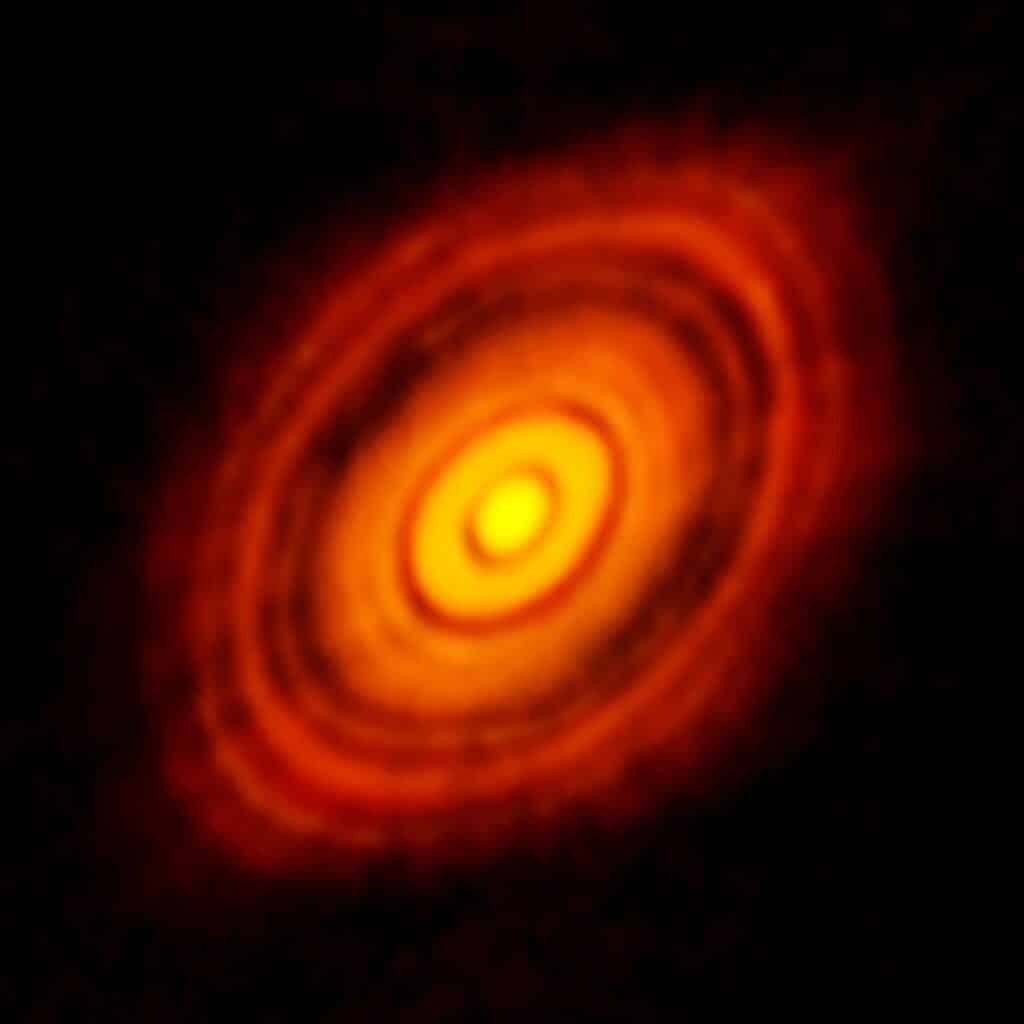Water is believed to play a significant role in planet formation. Still, water distribution in a stable, excellent disc remains obscure.
A new study using the Atacama Large Millimeter/submillimeter Array (ALMA) has successfully mapped map how water is distributed in a stable, cool disc.
Scientists have found water vapor around a young star in the disc, precisely where planets may be forming. The findings show that the young Sun-like star HL Tauri’s inner disc, which is 450 light-years distant from Earth in the constellation Taurus, contains at least three times as much water as all of Earth’s oceans.


Credit:
ALMA (ESO/NAOJ/NRAO)
Co-author Leonardo Testi, an astronomer at the University of Bologna, Italy, said, “It is truly remarkable that we can not only detect but also capture detailed images and spatially resolve water vapor at a distance of 450 light-years from us.”
In gas- and dust-rich discs, ring-shaped gaps are created by orbiting young planet-like entities as they accumulate matter and expand.
The images revealed a substantial quantity of water vapor at a range of distances from the star, including a gap where a planet could be forming.
This suggests that this water vapor could affect the chemical composition of planets forming in those regions.
“It is fascinating to witness directly, in a picture, water molecules being released from icy dust particles,” says Elizabeth Humphreys, an astronomer at ESO who also participated in the study.
Our results show how the presence of water may influence the development of a planetary system, just like it did some 4.5 billion years ago in our own Solar System,” Facchini adds.
Journal Reference:
- Stefano Facchini, Leonardo Testi, Elizabeth Humphreys, Mathieu Vander Donckt, Andrea Isella, Ramon Wrzosek, Alain Baudry, Malcom D. Gray, Anita M. S. Richards, Wouter Vlemmmings. Resolved ALMA observations of water in the inner astronomical units of the HL Tau disk. Nature Astronomy, 2024; DOI: 10.1038/s41550-024-02207-w